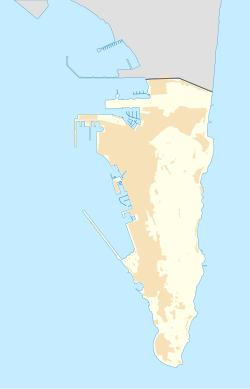Description
This cave, which is actually four caves, is in the cliff face between Camp Bay and Little Bay. They are known as Devil’s Fall Cave, Devil's Fall (North), Devil's Fall (West-Upper) also known as Crack Cave and Devil's Fall (West-Lower). The location is considered dangerous. [2] In the 1950s there were a large number of cannon balls found in the cave. It is surmised that these had rolled down the slopes into the cave during the many times that Gibraltar was under siege. [2]
The Devil's Fall cave is one of few identified as being of particular archaeological interest. The cave is a Class A listed building as designated by the Government of Gibraltar's Gibraltar Heritage Trust Act of 1989. [3] The importance of the cave, and its condition, led to the rejection of a nearby planning application in 2013. [4]
In 2018 the status of the cave was confirmed in the Heritage and Antiquities Act by the Government of Gibraltar noting that it was a prehistoric shelter. [5]
This page is based on this
Wikipedia article Text is available under the
CC BY-SA 4.0 license; additional terms may apply.
Images, videos and audio are available under their respective licenses.
